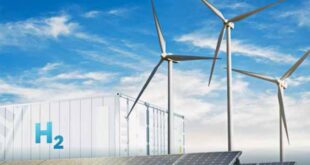The U.K. has long had big plans for geothermal energy, having assessed the potential of converting old coal plants into geothermal facilities in recent years. But now other parts of the world are catching up, including several European states and some countries across Africa. As governments seek to diversify their green energy portfolios, many are now looking to geothermal energy as a potential alternative energy source to fossil fuels and already well-established renewable options, such as wind and solar power.
In Yorkshire, in the U.K., a former fracking site could provide the space for a new geothermal facility. This marks a huge turnaround, as just seven years ago, Third Energy was given permission to carry out a fracking project at an existing well, but plans were halted after the U.K. upheld a ban on fracking. Now, CeraPhi Energy, a group consisting of former oil and gas veterans plans to use their experience in the industry to develop a geothermal energy site. The Kirby Misperton project is in the final phase of testing with so far positive results.
Accessing geothermal sources requires the drilling of a borehole to depths of about two to three miles and injecting cold water into the hot rocks beneath the Earth’s surface at a low pressure. A second borehole is drilled to allow warm water to return to the surface to be used for heating or to generate electricity. The environmental risk of geothermal operations is low, but there have been relatively few commercial-scale projects due to previous difficulties in developing the technology required to access geothermal sources.
CeraPhi expects to start developing the site and wells into real projects within the next few months. The company’s founder, Karl Farrow, stated “I think it’s the only direct competitor in respect of gas heating.” He added, “I think it could honestly make up 15 to 20 precent of the energy mix for heat going forward, if not more.”
In Europe, a shortage of natural gas following the Russian invasion of Ukraine and subsequent sanctions on Russian energy has driven several country leaders to look to alternative energy sources to meet their needs. Geothermal has long been viewed as a niche energy sector in Europe, currently used for heating in just two million of the EU’s 100 million home heating systems. However, the European Geothermal Energy Council (EGEC) lobby recently outlined a goal of using geothermal energy sources to supply a quarter of the region’s energy needs by the end of the decade.
Last year, in Berlin, the government announced a strategy to increase Germany’s geothermal potential tenfold to 10 terawatt-hours, adding 100 geothermal projects by 2030. Geothermal energy could contribute 4.4 percent of Germany’s heating power by the end of the decade, rising from a value of $53.4 million to €801 million, with the potential to expand significantly more. France. Italy, the Netherlands, and Hungary also have big plans for developing geothermal energy projects.
The geothermal market in the Netherlands is expected to triple in value to $182 million by 2030. European geothermal leader Iceland already gets around a fifth of its electricity and almost all its heating from geothermal power, with plans to expand its network further. And in May, Hungary opened the biggest geothermal heating system in the EU, with an EU investment of $24.5 million. It consists of 27 wells, 16 heating plants, and 250 kilometres of distribution pipe network and is expected to provide energy to more than 28,000 households and over 400 public buildings in the area.
While geothermal energy capacity is expanding rapidly in the EU and U.K., there is also great optimism around Africa’s geothermal energy market. According to recent estimates from Rystad Energy, Africa’s geothermal sector is expected to attract at least $35 billion in investments by the mid-century, helping respond to the continent’s growing energy demand. In fact, Africa’s installed geothermal capacity could well surpass that of Europe by the end of the decade.
At present, there is around 1 GW of geothermal capacity across the African continent, half that of Europe. However, this is expected to at least double based on the current pipeline, and more projects are expected to be announced in the coming years. Rystad expects Africa’s geothermal capacity to increase to 13 GW by 2050, compared to around 5.5 GW of installed capacity in Europe. Kenya and Ethiopia will dominate the market, providing around 90 percent of the continent’s total capacity.
Daniel Holmedal, a Senior Supply Chain Analyst at Rystad Energy, stated “The geothermal industry in Africa is picking up steam and could help meet soaring demand across the continent in the decades to come. Analysing already announced projects signals significant growth on the horizon, but developments that Rystad projects to come online given economics and demand really highlight the rapid build-out. This growth will take the continent from being the sixth largest geothermal power generator in 2023 to the third largest in 2030.”

 Iran Energy News Oil, Gas, Petrochemical and Energy Field Specialized Channel
Iran Energy News Oil, Gas, Petrochemical and Energy Field Specialized Channel



